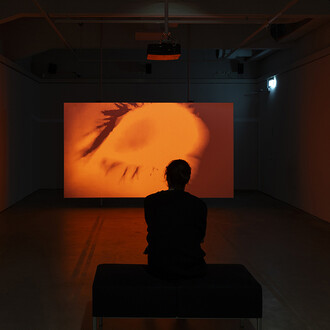By the year 2025, it became clear that the Storm was inevitable. The Families prepared their Bunkers. The Left Behind could do nothing but pray that some new and better world would emerge from the rubble of the old.
Matthew Day Jackson’s (b. 1974) exhibition Maa at the Serlachius Museum Gösta in Mänttä, and a role-playing game by the same name, imagine a post-apocalyptic world a thousand years in the future, made uninhabitable by humankind flourishing new kind of life. The human survivors who have been subterranean refugees for a thousand years are sending scouts to explore the devastated surface that is only known to them through myth and storytelling
The installation of figurative sculpture made at human scale form a cross-section of Jackson’s output created over the past ten years. The sculptures illustrate the other component of the exhibition, the role-playing game Maa.
Jackson is a multifaceted artist whose practice includes sculpture, painting, collage, photography, drawing, video, performance and installation. As an artist of the information age Jackson is insatiably curious and interested in everything, making skilful use of the hits that search-engine algorithms offer him. Design of jewelry, furniture and games and various cooperation projects and events broaden his expression beyond the traditional boundaries of visual art.
The world’s elite, of course, had long known the Storm was coming. When the warning signs became critical, they gathered up their servants, and disappeared into huge subterranean Bunkers. Deep underground, they established micro-societies, the Families. One day, the scorched Earth would bud green again, and their descendants would claim it as their birthright. Homo sapiens would be back. (The Game Maa, book 1, Introduction)
The curator of the exhibition is Timo Valjakka. The role-playing game was created as cooperation of the artist, Finnish game designer Juhana Pettersson and British art critic Tom Morton.












